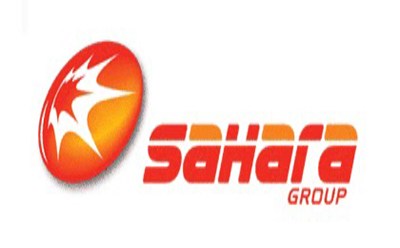
When markets hit new all-time highs and every asset class seems to be joining the party, it can be challenging to stick to your plan.
There’s always that innate human instinct to stick around for another 5% or 10% upside, even when your original objectives have been met and your rational brain is screaming to sell.
There’s a trick to knowing when to sell and when to hold for more upside. Think of your stocks as you would your car or household appliances. They may work fine for a long time, even if mechanical problems are brewing under the surface. That’s why you look for problems before they occur through regular maintenance.
Stocks can also generate gains over long periods despite fundamental red flags or bearish technical indicators.
How Chris Capre Is Positioning For Fast Trades In The Shutdown
Most traders react to volatility after it happens. Chris Capre is preparing in advance, with trades designed to close in just 1 to 5 days. This Sunday, he’ll show you how to use shutdown-driven swings to your advantage with short-term option spreads and risk-managed entries. Don’t miss it. Join the Free Session
Today, we’ll look at five winning stocks from the last few months that are starting to show signs of getting overextended, indicating that it may be time to hit the cash register on your gains.
SoundHound AI (NASDAQ:SOUN) has been a beneficiary of the AI gold rush; however, its stock has been highly volatile for a company with a $6.5 billion market capitalization. The company develops and sells Voice AI systems, which specialize in speech recognition and natural language processing. The original technology was conceived for a music discovery app, but SoundHound quickly pivoted once AI became a prominent investment theme. And now, its stock is up more than 250% over the last 12 months. Despite substantial stock gains and steady revenue growth, the company remains unprofitable; its Q2 2025 earnings release revealed a larger EPS loss than analysts had anticipated.
If SoundHound can continue executing its acquisition strategy and growing revenue, achieving profitability is likely. But for right now, the stock is looking frothy, and more than 30% of the float has been sold short. The daily chart is also showing signs of a breakdown; a bearish MACD cross is forming, and the previous two instances resulted in multi-week drawdowns.
Micron Technology Inc.
Another massive AI winner is Micron Technology (NASDAQ:MU), which sells high-scale memory chips to data centers. AI data centers require energy and compute at a constantly growing rate, so companies like Micron continue to see revenue expand as hyperscalers become increasingly hungry. The company has posted three consecutive top and bottom-line earnings beats, with the most recent positive report coming on September 23 for fiscal Q4. The $11.3 billion revenue figure for Q4 was the largest in the company’s history.
So why in the name of John Bogle would you want to sell a winner like Micron? Because multiple technical signals indicate a potential profit-taking opportunity following a 50% gain in just over a month. The Relative Strength Index (RSI) has once again drifted into Overbought territory, and the stock is hinting at fading upward momentum. The company’s next earnings report isn’t until December, so a lack of catalysts could continue weakening the trend. No shame in taking profits here following a massively successful year.
Dlocal Ltd. Inc.
Dlocal (NASDAQ:DLO) is a fintech startup focused on simplifying global payments, with most of its operations (and revenue) coming from Latin American countries. The company doesn’t post eye-popping revenue numbers like Micron, but it is a profitable enterprise with consistent sales growth over the past few years. However, the nature of its business makes it a volatile stock, and outsized gains are often followed by steep declines. With the company facing an earnings headwind from the Argentinian currency devaluation, it might be a good time to head for the exit.
The chart certainly backs up this theory. The stock has seen more sellers than buyers over the last few sessions, and August’s 50% boost has flattened out. A dreaded double top appears to be forming as the price struggles to break the $16 mark. Examining the MACD for confirmation, we can also observe a bearish cross that drives momentum further downward. The stock is still up 25% over the last three months, so taking profits now would still lock in a significant gain.
ACM Research Inc.
ACM Research (NASDAQ:ACMR) jumped 11% in a single day earlier this week, reaching a new yearly high and quickly approaching the all-time high the stock set back in February 2021. The semiconductor equipment manufacturer now earns more than $780 million in annual sales, and its most recent earnings release showed an upside earnings surprise north of 30%. So why is ACMR a stock to consider selling right now? The earnings surprises are actually beginning to slow, and the company missed on revenue in Q3 for the first time since 2023.
ACMR’s nearly 200% YTD gain has been buoyed by strong support along the 50-day simple moving average (SMA). The price dipping to the 50-day SMA has previously been a buying signal. However, we are now seeing the opposite scenario, where the price soars well above the support line and begins to look overextended. The RSI confirms these worries as it ticks above the Overbought threshold, so a return to the $30 level would not be surprising over the next few weeks.
Axcelis Technologies Inc.
Another AI-related company that reported significant gains in Q3 is Axcelis Technologies (NASDAQ:ACLS), which makes cleaning equipment for semiconductor manufacturers. A highly lucrative business, Axcelis earned more than $1 billion in total sales last year. However, it’s no longer as lucrative as it once was. Despite beating analysts’ projections on EPS and revenue in every quarter for the previous five years, the overall numbers are declining. Axcelis’s Q1 2025 revenue fell under $200 million for the first time since Q3 2021, and its Q2 2025 revenue represented a YOY decline of more than 20%.
Revenue hits haven’t led to stock drawdowns yet, though. The stock has increased by more than 30% over the last three months and has been trading in a tight uptrend, as indicated by the trendlines above. However, the stock has now extended past the upper bound of the range, and technical signals on the RSI and MACD indicate a potential pullback.
Editorial content from our expert contributors is intended to be information for the general public and not individualized investment advice. Editors/contributors are presenting their individual opinions and strategies, which are neither expressly nor impliedly approved or endorsed by Benzinga.
Image: Shutterstock



